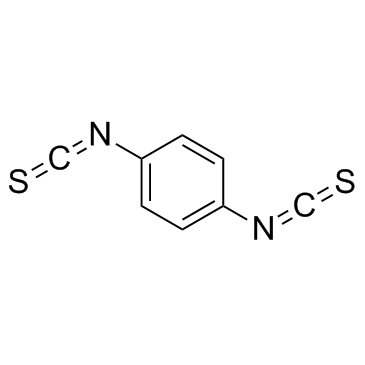Optimizing the immobilization of single-stranded DNA onto glass beads.
M K Walsh, X Wang, B C Weimer
文献索引:J. Biochem. Biophys. Methods 47(3) , 221-31, (2001)
全文:HTML全文
摘要
The attachment of single-stranded DNA to a solid support has many biotechnology and molecular biology applications. This paper compares different immobilization chemistries to covalently link single-stranded DNA (20 base pairs), oligo(1), onto glass beads via a 5'-amino terminal end. Immobilization methods included a one-step 1-ethyl-3-(3-dimethylaminopropyl) carbodiimide (EDC) and a two-step EDC reaction to succinylated and PEG-modified glass beads. The third method used 1,4-phenylene diisothiocyanate to immobilize oligo(1) to aminopropyl glass beads. The influence of coupling buffer, oligo(1) concentration, and EDC concentration was also investigated. The one-step EDC-mediated procedure with succinylated or PEG-modified beads in 0.1 M MES buffer, pH 4.5, resulted in the highest immobilization efficiency, 82-89%. EDC concentrations greater than 50 mM and oligo(1) concentrations of 3 microg/g bead were required for effective immobilization. A complementary oligonucleotide, oligo(2), was able to hybridize to the immobilized oligo(1) with a 58% efficiency. This oligonucleotide was subsequently released at 70 degrees C. The relationship between the surface density of oligo(1) and the hybridization efficiency of the complementary oligonucleotide is described.
相关化合物
| 结构式 | 名称/CAS号 | 分子式 | 全部文献 |
|---|---|---|---|
 |
对苯二异硫氰酸酯
CAS:4044-65-9 |
C8H4N2S2 |
|
Label-free impedimetric immunosensor for ultrasensitive dete...
2013-01-15 [Biosens. Bioelectron. 39(1) , 220-5, (2013)] |
|
Barcoded nucleotides.
2012-01-02 [Angew. Chem. Int. Ed. Engl. 51(1) , 254-7, (2012)] |
|
Dendrimer-activated solid supports for nucleic acid and prot...
2001-09-03 [ChemBioChem. 2(9) , 686-94, (2001)] |
|
Subunit associations of (Na+ + K+)-dependent adenosine triph...
1983-08-25 [J. Biol. Chem. 258(16) , 9878-85, (1983)] |
|
Solid-phase sequence analysis of proteins electroblotted or ...
1990-05-15 [Anal. Biochem. 187(1) , 10-9, (1990)] |